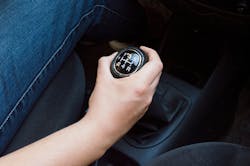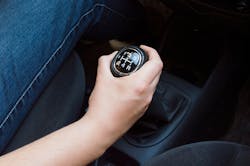3 Myths about Manual and Automatic Transmissions
Auto enthusiasts, seemingly a dying breed, have long argued that manual transmissions, or stick shifts (though some of you might remember shifters on the steering column as well), are the “only” way to drive. Automatics are made for, well, others.
Apparently, it might not matter; automatics seem to have won the argument. Around 1995, a little over 70% of the cars on the road sported automatic transmission, which left 30%, almost a third, with manuals. By 2013, only 4% of the cars sold in the U.S. were equipped with manual transmissions. In fact, according to Edmunds, 67% of the cars made for the 2013 model year were only available with automatic trannies. In an interesting side note, 80% of the cars in Europe and Japan have manual transmissions.
Here are three common myths surrounding manual transmissions—and some facts that rebut those myths.
Myth 1: Manual transmission always provide better fuel economy.
When automatics were introduced back in the 1940s, this was definitely true. The extra weight of an automatic transmission and mechanical losses through the drivetrain gave manuals the edge in miles per gallon. They also cost more as an option. But technological advances, most notably the extra gears the automatic provides that let the engine run closer to its optimum efficiency, have closed the gap. In some cases they’ve made automatics the fuel-economy leader. For example, by 2014, the Chevrolet Cruz Eco could save owners only about $100 per year in fuel costs. The 2014 Ford Focus actually gets better mileage with the automatic—31 mpg or 33mph with the Super Fuel Economy package’s six-speed automatic, while the manual gets 30 mpg.
So this is one of the myths that is partially right. Consumer Reports still backs the claim, saying manuals can give drivers an extra 2 to 5 mpg, in some cases. I suspect the better mileage, and the higher price of gas, are the reason Europeans are much more likely to be driving manual-transmission vehicles.
Myth 2: Cars with manual transmission always cost less than those with automatics.
Cars usually cost less with manuals, but that is not always true. According to Consumer Reports, for example, manuals save buyers between $8,000 and $12,000. But there are a growing number of cars, such as BMWs and some GM models, that cost the same regardless of the transmission they carry.
Maintenance costs also used to always be higher with automatics. But better designs and manufacturing have led to transmissions that last the life of the vehicle, given a modicum of care. Manual transmissions, on the other hand, rarely last the life of the car and, in most cases, the car will need two replacements before it’s sold for scrap. Much of this depends on the driver’s behavior and a few other variables.
So while it seems manuals are less expensive for now, the trend is toward them coming out on the other side of the equation soon. And, as said earlier, most cars on the showroom floor aren’t even available with manuals.
Myth 3: Drivers who prize performance always choose manual transmissions.
There’s little doubt that this was true at one time, but now it falls into the “partially true” category. In a few years, it will very likely be moot. Shifting gears and working the clutch certainly makes the driver more involved in the “driving experience,” but so does turning a crank to get the car started and using similar levers to open the windows. And manual transmission might be more effective at getting the motor’s full power to the wheels, if drivers know what they are doing.
On the other side of the coin, automatics make for a more comfortable ride, let the driver keep both hands on the wheel, and take some wear and tear off the driver’s left foot, especially in stop-and-go city traffic.
Automatics have also been improved, thanks to technology. It’s gotten to the point where some auto engineers and drivers admit that properly designed computer-controlled transmissions can shift faster, and more intelligently, than humans.
There might be a few sports cars out there that come either only with manuals or as options, but many supercar makers have made the switch, including Jaguar, Maserati, Lamborghini, and even Ferrari, which no longer manufactures any sports cars with manual transmissions.
There are a few myths regarding manual and automatic transmission that will likely remain either myths or matters of opinion. For example, some people believe manuals are less likely to be stolen since car thieves may not know how to drive a manual. Unfortunately, no one tracks what kinds of transmissions are in the cars and trucks that get stolen each year. So there is no hard data to support or debunk the myth.
Another opinion sometimes masquerading as a myth is that manuals are more fun to drive. Fun is too subjective to be defined by statistics, but I can accept the theory that some people find driving a stick shift is more fun and that to others it’s just another chore better offloaded to technology.
About the Author
Stephen Mraz Blog
Senior Editor
Steve serves as Senior Editor of Machine Design. He has 23 years of service and has a B.S. Biomedical Engineering from CWRU. Steve was a E-2C Hawkeye Naval Flight Officer in the U.S. Navy. He is currently responsible for areas such as aerospace, defense, and medical.


